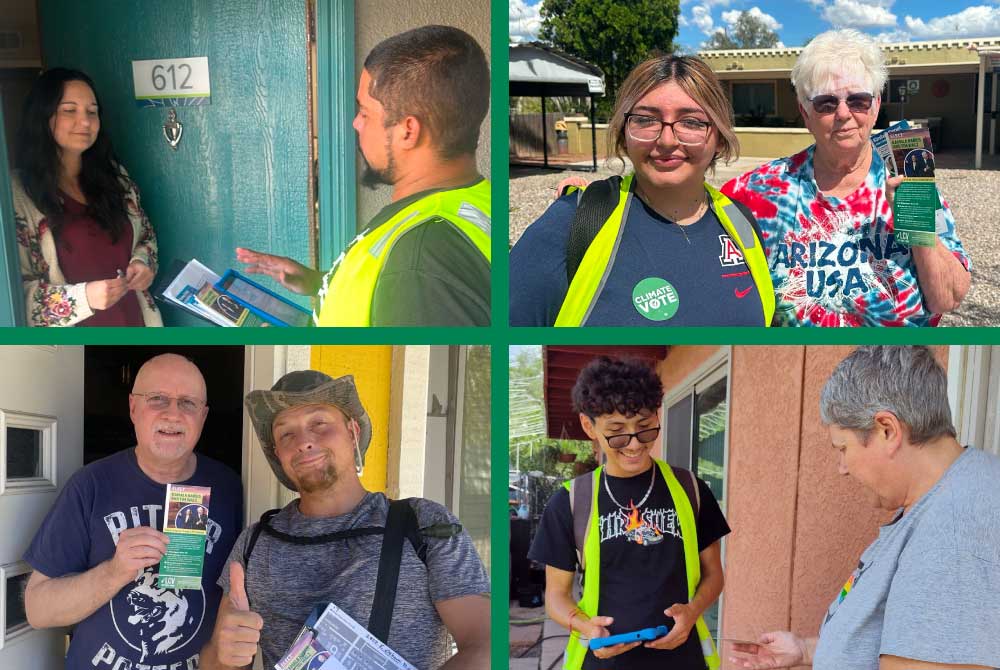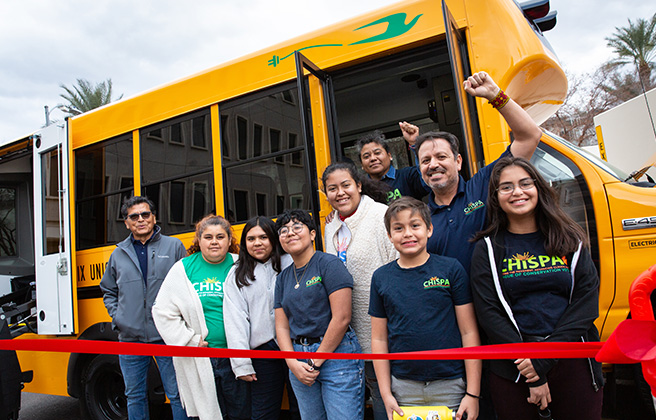
Top 6 Stories Worth Reading — October 2024
Oct 31, 2024
 A team from the AmeriCorps NCCC Forest Corps, a program established in partnership with the American Climate Corps, works to advance reforestation efforts at Boise National Forest. Photo by AmeriCorps NCCC via LinkedIn
A team from the AmeriCorps NCCC Forest Corps, a program established in partnership with the American Climate Corps, works to advance reforestation efforts at Boise National Forest. Photo by AmeriCorps NCCC via LinkedIn
As much of the southeastern U.S. grapples with the devastation brought by the major, climate-change-fueled hurricanes Helene and Milton, it is more important than ever to stop and take notice of the truly inspiring progress being made across the country in the fight against the climate crisis. Here are the best climate news stories of the past month that are sparking hope in the climate movement.
 AmeriCorps members in the Forest Corps program. Photo courtesy of the USDA Forest Service.
AmeriCorps members in the Forest Corps program. Photo courtesy of the USDA Forest Service.
As President Biden often says, climate and jobs go hand in hand. Thanks to the Biden-Harris administration’s Investing in America agenda, a new report from the Department of Energy shows that jobs in the clean energy sector grew 4.2% in 2023, twice the rate of job growth in the economy overall. Clean energy jobs that experienced impressive growth in 2023 include renewable energy, transmission, distribution, and storage jobs; as well as jobs in the zero-emission vehicle industry.
With clean energy jobs booming, the demand for trained clean energy workers nationwide is growing. Over the lifetime of the Inflation Reduction Act, CHIPS and Science Act, and the bipartisan infrastructure law, these three laws could create an estimated 2.9 million jobs per year, and we need to have skilled workers ready and able to fill those positions. Recognizing this need, last month a group of 22 governors launched the Governors Climate-Ready Workforce Initiative to train 1 million workers by 2035 to fill the growing number of clean energy jobs and help speed the country’s transition to clean energy.
The Biden-Harris administration is also working to fill climate and clean energy jobs across the country by training and employing 15,000 young people through the American Climate Corps. This milestone, reached last month, puts the program ahead of schedule to reach its goal of employing 20,000 people in its first year to improve energy efficiency, climate preparedness and resilience in communities, agriculture, and conservation areas across the country, while supporting economic development. The administration also announced the launch of a new Environmental Justice Climate Corps to employ more than 250 workers to help organizations in environmental justice communities pursue local projects to improve public health and safety and community climate resilience.
 Photo courtesy of Chispa
Photo courtesy of Chispa
Beyond its youth training and employment programs, the Biden-Harris administration is supporting the next generation through their affordable clean energy plan’s benefits for schools. Thousands of K-12 schools that did not previously have air conditioning have been able to take advantage of federal reimbursements for installing energy efficient heat pumps to cool their schools. These schools are seeing both financial benefits and improvements to the physical and mental health of students and educators, as well as improved academic performance, thanks to the cooler air.
The benefits of Biden-Harris policies are extending to higher education institutions as well. The Environmental Protection Agency’s green lending program announced its first loan will finance a $31.8 million solar installation at the University of Arkansas. The lending program, the Inflation Reduction Act’s Greenhouse Gas Reduction Fund (GGRF) or “Green Bank,” aims to catalyze private investment in projects to lower carbon emissions. Over the length of its contract, the solar installation is expected to cut 2.8 million tons of carbon emissions from the atmosphere and will save the university $120 million in energy costs over 25 years.
Another EPA initiative, the Clean School Bus Rebate Program, doled out nearly $1 billion last month to help school districts replace their dirty diesel buses with cleaner models. This round of funding from the program builds on a previous nearly $3 billion investment in cleaner school buses nationwide. To date, the program has funded the replacement of approximately 8,700 toxic diesel school buses, creating cleaner, safer air for students and communities across the country. LCV’s Chispa program has been instrumental in getting this funding to school districts through the Clean Buses for Healthy Niños campaign. Learn more about the campaign on Chispa Nevada’s website.
Thanks to these investments from EPA, California’s Oakland Unified School District was able to deploy a 100% electric school bus fleet, becoming the first major school district in the country to do so. The all-electric fleet will remove 25,000 metric tons of greenhouse gas emissions from the atmosphere and have a significant impact on the health and students and other members of the community. Additionally, the 74 bus fleet is equipped with groundbreaking technology that will enable the buses to provide energy back to the grid when not in use, producing a whopping 2.1 gigawatt hours of energy each year.
As electric school bus adoption is ramping up across the country, so is the adoption of electric passenger vehicles (EVs). To date in 2024, the Biden-Harris administration has issued point-of-sale electric vehicle (EV) tax credits for over 300,000 EVs, worth a total of $2 billion. The EV tax credit is making environmentally friendly EVs more accessible for everyday consumers, and helping reduce the number of polluting gas-powered cars on the road.
As more people choose EVs, and the Biden-Harris administration is helping ensure more of those EVs are made in the U.S. A report released from the Environmental Defense Fund (EDF) shows significant and sustained investment in electric vehicle manufacturing and continued job growth in the industry, thanks in large part to the Biden-Harris clean energy plan, the Inflation Reduction Act (IRA). The EDF found that over the past nine years, $199 billion has been invested in EV manufacturing with 63% of that investment coming after the passage of the IRA two years ago, and 83% since the passage of the Bipartisan Infrastructure Law almost 3 years ago. These manufacturing investments have created 201,900 EV related jobs in the U.S.
With more EVs on the road, it is critical that drivers have a place to charge their vehicles on long drives, and the Biden-Harris administration is working to build out this infrastructure as well. In late August, the administration awarded $521 million in grants to state and local authorities nationwide to install 9,200 EV charging stations. Awarded to 29 states, eight tribal nations and the District of Columbia, the grants will fund chargers in communities and along major highways across the country.
Additionally, LAZ Parking, which owns parking facilities across the U.S. and Canada, is working to install EV chargers in parking facilities in 20 U.S. cities. The growth of EV charging infrastructure nationwide will help accelerate the adoption of EVs even more.
Follow us on Instagram or Twitter for weekly Good Climate News updates, and we’ll be back on The Power Source blog next month with another roundup of highlights.
To get involved in bringing about even more good climate news, join us at lcv.org/get-involved/.